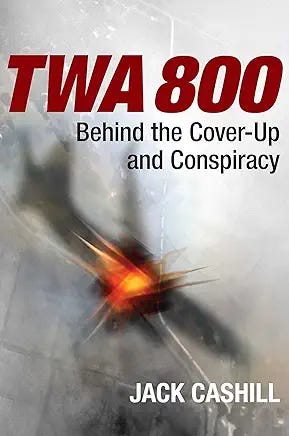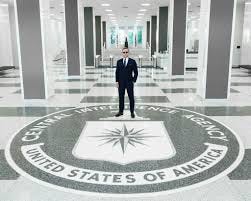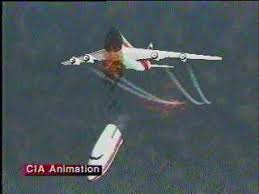On July 17, 1996, TWA 800, a Paris-bound 747, blew up ten miles off Long Island’s south shore, killing all 230 souls on board. Conversations like the one that follows have kept me on the hunt longer than I had ever anticipated.
“Jack Cashill?”
I took the call in my Kansas City office on my landline. I still had one. It was the spring of 2009.
“You got ’im.”
“This is witness number 73. Do you know who I am?”
I did indeed. She was arguably the single most important eyewitness to the destruction of TWA Flight 800 off the coast of Long Island 13 years earlier. During those years her identity eluded the many independent researchers into the crash, myself included.
As she told me, physicist Tom Stalcup, among the more dedicated of those researchers, had recently tracked her down. Before that contact, she had no idea how crucial was her testimony. Once she learned, she wanted to learn more and called me, since I had co-authored a book on TWA 800 with James Sanders called First Strike.
“Do you remember what I told the FBI?” she asked.
“I certainly do.” I could almost recite it. “Upside down Nike swoosh, correct?”
“That’s me.”
On July 17, 1996, Sandy—not her real name—was visiting friends on Long Island. They were relatives of her fiancé who was working in New York City. That evening Sandy and her two friends drove to a beach near the Moriches Inlet on the South Shore of Long Island. Just a few minutes after sunset, the FBI would report, “She observed an aircraft climbing in the sky, traveling from her right to her left.” This would have been from the west, JFK airport in New York City, towards the east, eventually Paris, the original destination of the ill-fated 747 with 230 souls on board.
The sun was setting behind her. “While keeping her eyes on the aircraft,” the FBI report continued, “she observed a ‘red streak’ moving up from the ground toward the aircraft at an approximately 45 degree angle. The ‘red streak’ was leaving a light gray colored smoke trail. The ‘red streak’ went passed [sic] the right side and above the aircraft before arcing back toward the aircraft’s right wing.”
According to the FBI, Sandy described the arc’s shape “as resembling an upside down NIKE swoosh logo.” The smoke trail, light gray in color, widened as it approached the aircraft. Agent Lee Butler interviewed Sandy at her North Carolina home three days after the disaster and wrote down Sandy’s account on a “302,” the standard FBI report form.
“She never took her eyes off the aircraft during this time,” the 302 continued. “At the instant the smoke trail ended at the aircraft’s right wing, she heard a loud sharp noise which sounded like a firecracker had just exploded at her feet. She then observed a fire at the aircraft followed by one or two secondary explosions which had a deeper sound. She then observed the front of the aircraft separate from the back. She then observed burning pieces of debris falling from the aircraft.”
Weeks before the FBI and the National Transportation Safety Board (NTSB) were able to piece together the break-up sequence of the aircraft, Sandy had nailed it. She was the perfect eyewitness. She worked in the travel industry. She had a long-standing interest in aviation. She tracked the plane and the “flare” as separate objects. She read no more into the explosion than what she could observe.
At the Moriches Inlet, she was as close to the actual site of the explosion as any of the other 755 NTSB witnesses, less than ten miles away. And she was not grandstanding. Just the opposite. Her friends and her fiancé were dead set against her cooperating with the FBI. The following day agent Mary Doran called and asked Sandy to talk to her friends.
Doran wanted their accounts as well. Sandy balked. As she told Doran, her friends were “really upset” she had given their names to the FBI. “They did not want to have any involvement whatsoever with the FBI,” she added. Sandy’s fiancé sided with his relatives, so much so that she feared he would break off the engagement if the FBI contacted them.
Sandy would marry her fiancé. At the time she called me, he was being treated for cancer in a hospital near Kansas City. Had her husband been healthy, she would not have dared to follow up. He wanted her to have nothing to do with the case, but now there was a story she felt the need to share. It involved her second interview. As reported on an FBI 302, agents Steven Bongardt and Theodore Otto visited Sandy at her North Carolina home on April 29, 1997, and produced a report more detailed than Agent Lee’s from July 1996.
Sandy covered much of the same territory, but her account was not as precise as it had been during the first interview nine months earlier. In that earlier interview, she claimed the object hit the right wing. This time “she could not recall which of the wings” was struck. Nor did she repeat her claim that the object came “up from the ground.” In this second account, she only claimed to have seen the object in mid-flight.
Unlike Agent Lee, Bongardt and Otto asked her what kind of object she had observed. “She replied that she believed she witnessed a missile,” the agents reported, “which had been fired from a boat which was located somewhere on the Atlantic Ocean.” By this time the idea that a missile struck TWA 800 had been shuttled off to the netherworld of the conspiracy theorist. A month earlier, the CIA and the FBI concurred that a sighting like hers was an optical illusion.
The agents did not include the “missile” detail to make Sandy look astute. They included it to make her look flighty. They also suggested a reason why her initial account might be unreliable. Although denying she was “inebriated” at the time of the crash, Sandy did admit that “she had consumed two (2) ‘Long Island Ice Tea’ cocktails” earlier that evening. This admission rendered her initial account suspect.
At the time, the FBI did not make audio recordings of interviews. A secretary simply took the handwritten 302s and typed them up. Sandy had only recently read the two separate 302s. She was still fuming when I talked to her. She had real problems with that second 302.
“I don’t even know what a ‘Long Island Ice Tea’ is,” she told me.
“Could it have been another drink?” I asked.
“No,” she told me. “I don’t drink, not at all. And there’s something else you don’t know, something stranger.”
“Tell me.”
“There was no second interview. They made it all up.”
“There’s something you may not know.” I added. “You’re not the only witness they did that to. They manufactured at least three other key eyewitness testimonies.”
The “they” in question was the CIA. What the CIA analysts lacked in integrity they made up for in nerve. Still, despite institutional pressure to yield, one unnamed FBI agent refused to accept the CIA narrative of a spontaneous fuel tank explosion followed by a 3,000-foot zoom climb of the noseless 747.
In my 2016 book, TWA 800, I referred to this unnamed dissenter as “Lewis Erskine” after the leading character in the TV series, The F.B.I. According to an internal CIA memo from April 29, 1997, Erskine sent the CIA a blistering critique of its zoom climb scenario and demanded answers to more than a dozen salient questions.
Erskine wanted to know why the analysts failed to account for the eight witnesses who saw an object “hit the aircraft” or the numerous witnesses who saw the object move from east to west, the opposite direction of TWA 800. In all, Erskine cited some 30 “problem witnesses” whose accounts did not square with the “agency scenario.” With some precision, he also challenged the aerodynamics of the CIA’s zoom climb.
The CIA analyst, likely Randolph Tauss, responded with his usual obfuscations, but he made one surprising concession, namely that he had no physical proof of a zoom climb after the initial “pitch up” of the aircraft. In fact, not a single witness had seen the 747 ascend after this initial convulsion.
The CIA analyst did not contest this point. “Whatever happens after these first few seconds,” he responded to Erskine, “is not understood by the CIA and would require extensive modeling of the aircraft beyond the CIA capabilities.” That concession did not stop the CIA from later producing its notorious animation recreating the imagined zoom climb.
After TWA 800 came out in 2016 a contact from Raytheon provided me with Erskine’s real name, Steven Bongardt. On the same day Bongardt was resisting the CIA in DC—April 29, 1997—the CIA rewarded his resistance by putting his name on the bogus second interview with Witness 73 at her home in North Carolina—on that very same April 29, 1997 day. They play dirty.
Some time after the media lost interest in TWA 800, the CIA awarded Randolph Tauss its Intelligence Medal of Merit, an award given for “performance of especially meritorious service or for achievement conspicuously above normal duties.” In a perverse way, Tauss deserved it. More through chutzpah than hard evidence, he and his colleagues managed to convince the media that nearly three hundred good citizens—pilots, surfers, fishermen, boaters, National Guard officers—could not tell up from down.
There is still some hope. In my July 8 article, “What We Now KNOW About TWA Flight 800,” I detailed Tom Stalcup’s increasingly successful efforts to ferret out the truth through the courts. It is worth reading. More than 70,000 people already have.








This is fascinating and further cements why no sane person who has read a smattering of the CIA's history should ever trust what it does or its methods. It is a rogue agency in the truest sense of the word.
Keep at it, Jack. You will get there. It took Michelangelo three years to chip away enough marble to create the statue of David, and he wasn't fighting the CIA, FBI and NSTB. It'll take you longer, but tenacity guarantees a win.